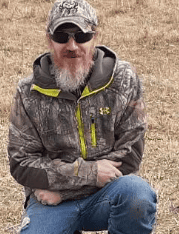
Today, we’ll unveil the secrets to trapping, a skill that not only connects you with nature but also helps in protecting farm animals and maintaining ecosystem balance.
We know diving into trapping can be overwhelming, especially if you’re new to the game. From choosing the right traps to understanding the behavior of different animals, there’s a lot to take in.
But don’t worry! This guide will walk you through the essentials of trapping, offering actionable steps, real-life examples, and valuable insights from experts like Bluegrass Trapper. Ready to embark on this exciting journey? Let’s dive in!
Understanding the Purpose of Trapping
- Why Trap? Trapping helps in controlling overpopulated prey animals, protecting farm animals, and maintaining ecological balance.
- Real-Life Example: Bluegrass Trapper, a seasoned expert, has been trapping since childhood to help prey and farm animals.
Tools and Equipment
- Choosing the Right Traps: Learn about Duke 550 traps for coyotes, dirt hole sets for raccoons, and dog-proof traps.
- Humane Practices: Ensure the use of laminated or cast jaws and check traps regularly.
- Tip: If a cat is caught accidentally, it can be released unharmed.
Finding the Perfect Trapping Location
- Identifying Signs: Look for tracks, trails, water sources, and visually appealing areas.
- Understanding Prey Behavior: Know how bobcats, coyotes, and raccoons behave to set traps effectively.
- Real-Life Example: The speaker’s encounters with bobcats and coyotes provide insights into their hunting patterns.
Turning Trapping into a Business
- Selling and Tanning Hides: Explore the fur market, learn about tanning techniques, and find buyers like Rising Star Sports Works.
- Real-Life Example: The fluctuating prices of Bobcat hides and the speaker’s experience in selling them.
Trapping for Survival and Farm Protection
- Survival Tool: Traps can be set and left unattended, making them a reliable survival tool.
- Farm Protection: Deal with predators like hawks, owls, and raccoons that threaten farm animals.
- Real-Life Example: The speaker’s success in trapping 20 coyotes on one farm.
Engaging with the Trapping Community
- Festivals and Events: Attend events like the one in Bowling Green, Kentucky, to learn from experts.
- Real-Life Example: Bluegrass Trapper’s planned beginner-level information session at the festival.
With this guide, you’re now equipped to start your trapping journey with confidence. From selecting the right tools to understanding the business aspect, you’ve got the knowledge you need.
Remember, trapping is not just about catching animals; it’s a skill that connects you with nature, helps in survival, and contributes to ecological balance.
Excited to explore this fascinating world? Check out the trapping class with Bluegrass Trapper at the Kentucky Sustainable Living Festival 🦊🐾
